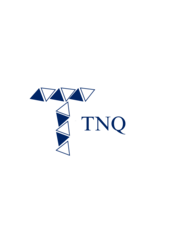It’s been more than two years since Eargo last updated its hearing aid hardware, and that’s not a slight: Eargo makes some fine products that have successfully stood the test of time. Upgrades for the sake of upgrades are never a good idea.
But the hearing aid world of today is in flux, and it’s beginning to diverge from the way it looked back in 2023. Not only is technology changing, but so is the business landscape. Namely, Eargo recently merged with hearX (maker of the Lexie brand hearing aids), forming a parent company called LXE. The premium Eargo brand remains unchanged, but consolidation like this is usually a sign that prices may come down as the manufacturer landscape shakes out a bit.
Alas, don’t hold your breath that Eargo, which has always had expensive hardware, will be cutting prices any time soon. In fact, with the Eargo 8, the company has released its priciest hearing aids to date, though the quality of the product is compelling enough to merit at least some level of consideration.
Smarter Aids
Photograph: Chris Null
Like nearly all of Eargo’s models, the Eargo 8 are fully in-the-ear hearing aids, designed explicitly to keep size at a minimum. At 0.94 grams each, the tiny, cylindrical Eargo 8 are functionally the same size as the Eargo 7 and Eargo 5 before them, though a bit more bulbous—almost bottle-shaped—rather than cylindrical.
The real upgrades are under the hood. The biggest update involves the way the Eargo 8 handles noise. A new feature called Smart Sound Adjust “analyzes your environment and automatically adjusts to the noise levels when entering a noisy restaurant or crowded place,” the idea being that the app will tweak its noise cancellation levels automatically in response to ambient sound. The other added feature is a device scanner, which Eargo describes as an on-demand “wellness check” for your aids, ensuring they aren’t clogged with earwax. In the app, the on-demand Device Scan requires you to return the Eargo 8 hearing aids to the charging case and, after a few minutes, reports the results of its speaker and microphone tests. (So far, I have only seen “Passed” results.)
In daily use, I found the Eargo 8 hearing aids to be top-notch, with no discernible difference in quality over the Eargo 7. I found my voice to be a bit over-amplified—a common complaint with hearing aids—with no good way to adjust it. Otherwise, hearing support was solid, with no hiss and any feedback limited to minor instances when removing or inserting the aids. Like most high-quality hearing aids, the units provided me with just a moderate boost where I needed it the most, and the auto-adjust noise cancellation seemed to work well, though there’s no indication as to how much noise cancellation is being applied at any time.
That’s because, like all of Eargo’s premium aids, communication between the aids and the Eargo app is a one-way street. You can use the app to change volume or environmental programs, but the aids don’t report their status back to the app. All changes are confirmed when the aids beep a couple of times in your ear, only offering a voice response when volume hits “min” or “max” or when changing environmental modes.







































